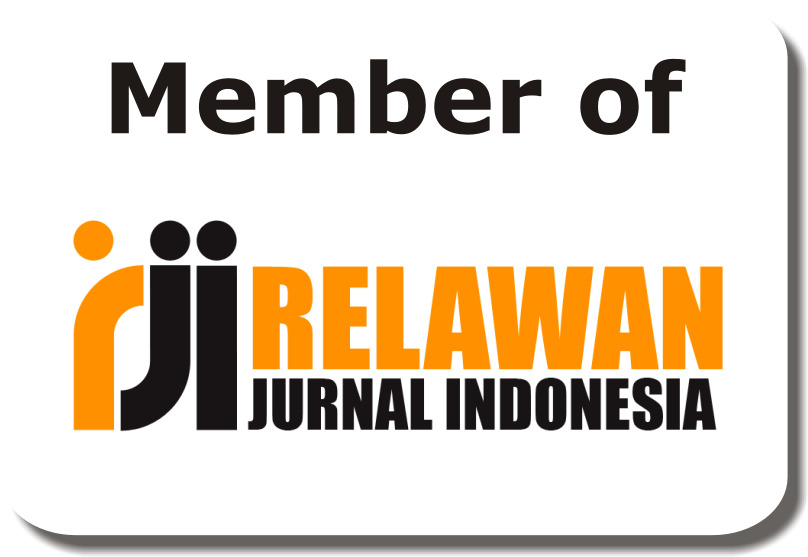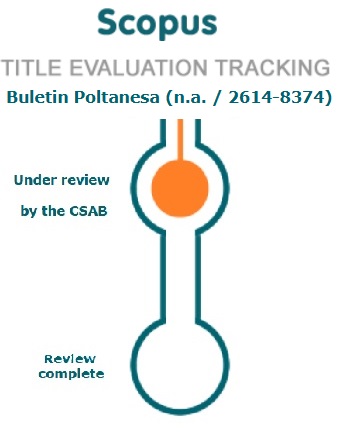Changes in Community Behavior Regarding Cardiovascular Health and Hypertension After Participating in Prolanis Activities Literature Review
DOI:
https://doi.org/10.51967/tanesa.v26i1.3299Keywords:
Behavioral changes, Cardiovascular, Hypertension, ProlanisAbstract
The Chronic Disease Prevention and Management Program (Prolanis) has become one of the main strategies in efforts to increase public awareness of cardiovascular health and reduce the prevalence of hypertension. This study aims to present a literature review regarding the impact of the Prolanis program on changing people's behavior regarding cardiovascular health and hypertension management. The literature search method was carried out through various online databases using relevant keywords. The results of literature analysis show that the Prolanis program has consistently proven effective in increasing public knowledge about cardiovascular risk factors, motivating changes in healthy behavior such as balanced eating patterns and increasing physical activity, as well as increasing compliance with treatment and monitoring of hypertension conditions. These findings highlight the important role of the Prolanis program in changing people's behavior towards a healthier lifestyle and better management of hypertension. The implications of the results of this literature include the need for wider development and implementation of the Prolanis program as well as ongoing evaluation to ensure its sustainability and effectiveness in overcoming cardiovascular health problems and hypertension at the community level.Systematic review research is a way in the research process to find the best results from previous research to search for literature systematically and then analyze and conclude using the data prism method flow from the results of literature data analysis to answer problems effectively and significantly. The data that has been collected from this data collection method is then processed and combined to obtain related explanationsThe impact of the Healthy Elderly Program (Prolanis) on changes in community behavior in relation to cardiovascular health and controlling hypertension.
References
Ariana, R., Sari, C., & Kurniawan, T. (2020). Perception of PROLANIS participants about chronic disease management program activities (PROLANIS) in the Primary Health Service Universitas Padjadjaran. NurseLine Journal, 4(2), 103–113. https://doi.org/10.19184/nlj.v4i2.126873
Badan Litbangkes Kemenkes RI. (2013). Hasil utama Riskesdas2013.https://labmandat.litbang.kemkes.go.id/riset-badan-litbangkes/menu-riskesnas/menu-riskesdas/374-rkd-2013.
Cakera, I. K. I. W., Nopiyani, N. M. S., & Wirawan, I. M. A. (2018). Association between participation in a chronic disease management program, medication adherence, and decrease of blood pressure. Public Health and Preventive Medicine Archive, 6(2), 119–123. http://dx.doi.org/10.15562/phpma.v6i2.13613.
Deiby, O., Lumempouw, H. I. S. W., & Polii, H. (2016). Pengaruh senam PROLANIS terhadap penyandang hipertensi. Jurnal e-Biomedik (eBm), 4(1). https://doi.org/10.35790/ebm.v4i1.116974.
Dewi, F., Andriane, Y., & Fitriyana, S. (2019). Pattern of blood pressure in hypertensive patients after following PROLANIS in Pasirkaliki Health Center. Prosiding Pendidikan Dokter, 5(1), 778–785. http://dx.doi.org/10.29313/kedokteran.v0i0.1585311
Dyanneza, F., & Tamtomo, D. (2017). The effectiveness of chronic disease management program in blood pressure control among hypertensive patients. Indonesian Journal of Medicine, 2(1), 52–62. https://doi.org/10.26911/theicph.2017.1557.
Hastuti, A. P., Kurniawan, A. W., & Mufarokhah, H. (2021). Chronic disease management programs based on caring theory with blood pressure reduction. Journal of Nursing Practice, 5(1), 70–76. https://doi.org/10.30994/jnp.v5i1.1538
Jafar, T. H., Gandhi, M., De Silva, H. A., Jehan, I., Naheed, A., Finkelstein, E. A., et al. (2020). A community-based intervention for managing hypertension in rural South Asia. New England Journal of Medicine, 382(7), 717–726. https://doi.org/10.1056/NEJMoa191
Komalasari, D. R., Sudrajat, K. B., Novitasari, T. H., Kirani, Y. S., Safa’Nabila, A., & Sudaryanto, W. T. (2023). Efektivitas senam hipertensi untuk pengendalian tekanan darah bagi penderita hipertensi di Prolanis Desa Karangasem. Jurnal ABDIMAS Indonesia,1(3),168–175.
Kravetz, J. D., & Walsh, R. F. (2016). Team-based hypertension management to improve blood pressure control. Journal of Primary Care & Community Health,7(4),272–275. https://doi.org/10.1177/2150131916645580
Kurniawidjadja, L. M., Ok, S., Martomulyono, S., Susilowati, I. H., KM, S., & KKK, M. (2021). Teori dan aplikasi promosi kesehatan di tempat kerja meningkatkan produktivitas. Universitas Indonesia Publishing.
Kustiyanti, S. A. (2023). Smart Hospital: Konsep, implementasi, dan tantangan. Transformasi Rumah Sakit Indonesia Menuju Era Masyarakat, 5, 161.
Larasati, N., & Husna, N. (2019). Pengaruh Prolanis dan kepatuhan minum obat terhadap tekanan darah pasien hipertensi di Puskesmas Gamping 1. Media Ilmu Kesehatan,8(2),87–93. https://doi.org/10.30989/mik.v8i2.29312
Misbach, M. D., Adhika, F. N., Manyullei, S., Pasombo, A. P. D., Maharani, D. N., Faizal, S. A., & Fatta, A. A. (2023). Efektivitas senam hipertensi dan pembagian leaflet terhadap perubahan tekanan darah dan pengetahuan masyarakat di Kelurahan Labakkang, Kecamatan Labakkang, Kabupaten Pangkajene dan Kepulauan, Tahun 2023. Jurnal Altifani Penelitian dan Pengabdian kepada Masyarakat, 3(4), 486–493.
Murti, F. S., Josef, H. K., & Istiono, W. (2017). Prolanis influence on decreasing blood pressure of hypertension patients in Puskesmas Pandak II Bantul 2017. Jurnal UGM, 2(2), 54–59. https://doi.org/10.22146/rpcpe.4601610
Palupi, F. H., ST, S., Arismawati, D. F., ST, S., Ke, M., Tumenggung, I., Margalin, B., Prisusanti, R. D., ST, S., Prihayati, S. S., & Zuhrotunida, S. (2023). Ilmu kesehatan masyarakat. CV Rey Media Grafika
Pandey, R. M., Agrawal, A., Misra, A., Vikram, N. K., Misra, P., Dey, S., et al. (2013). Population-based intervention for cardiovascular diseases related knowledge and behaviours in Asian Indian women. Indian Heart Journal, 65(1), 40–47. https://doi.org/10.1016/j.ihj.2012.12.019.
Sabriana, I., & Indrawan, J. (2020). Mengembangkan kesadaran diri (self-awareness) masyarakat untuk menghadapi ancaman non-tradisional: Studi kasus COVID-19. Jurnal Lemhannas RI, 8(2), 131–150.
Saelan, S., Toyyibah, D., Adi, G. S., & Prasetyo, B. (2021). Pelaksanaan self management terhadap perilaku perawatan diri pada pasien gagal jantung di Desa Plesungan. Wiraraja Medika: Jurnal Kesehatan, 11(2), 49–55.
Sari, N. W., Margiyati, M., & Rahmanti, A. (2020). Efektifitas metode self-help group (SHG) terhadap tekanan darah pada lansia hipertensi. Jurnal Keperawatan, 3(3), 10–16. https://stikesks-kendari.e-journal.id/JK/article/view/240
Ulfa, K., Mulfianda, R., & Desreza, N. (2019). Efektivitas senam Prolanis terhadap penurunan tekanan darah dan kadar gula darah di Puskesmas. In Prosiding SEMDI-UNAYA (Seminar Nasional Multi Disiplin Ilmu UNAYA), 3(1), 728–740.
Downloads
Published
How to Cite
Issue
Section
License
Copyright (c) 2025 Buletin Poltanesa

This work is licensed under a Creative Commons Attribution-ShareAlike 4.0 International License.
The copyright of this article is transferred to Buletin Poltanesa and Politeknik Pertanian Negeri Samarinda, when the article is accepted for publication. the authors transfer all and all rights into and to paper including but not limited to all copyrights in the Buletin Poltanesa. The author represents and warrants that the original is the original and that he/she is the author of this paper unless the material is clearly identified as the original source, with notification of the permission of the copyright owner if necessary.
A Copyright permission is obtained for material published elsewhere and who require permission for this reproduction. Furthermore, I / We hereby transfer the unlimited publication rights of the above paper to Poltanesa. Copyright transfer includes exclusive rights to reproduce and distribute articles, including reprints, translations, photographic reproductions, microforms, electronic forms (offline, online), or other similar reproductions.
The author's mark is appropriate for and accepts responsibility for releasing this material on behalf of any and all coauthor. This Agreement shall be signed by at least one author who has obtained the consent of the co-author (s) if applicable. After the submission of this agreement is signed by the author concerned, the amendment of the author or in the order of the author listed shall not be accepted.








